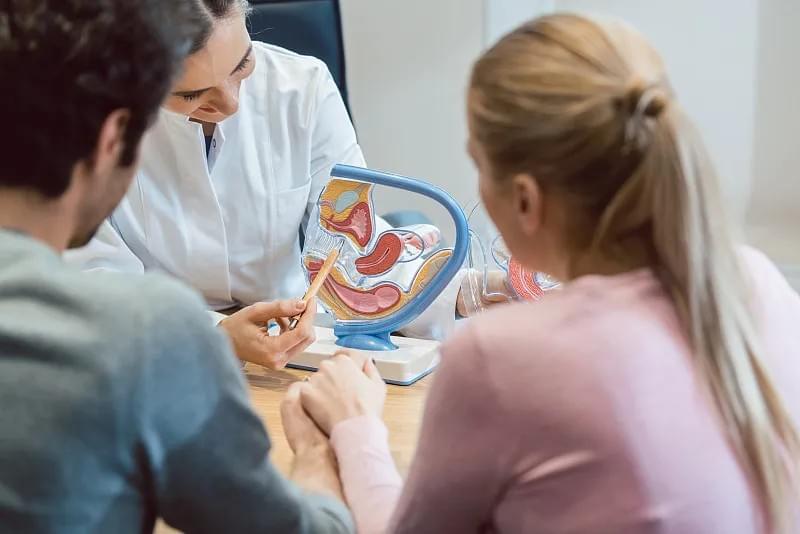In the ever-evolving landscape of reproductive medicine and bioethics, the concept of conceivability surrogacy has emerged as a compelling and thought-provoking alternative to traditional surrogacy. As society grapples with the complexities of family planning, identity, and reproductive rights, this relatively new term offers a fresh perspective on how we understand parenthood, genetic contribution, and emotional investment in the process of bringing a child into the world.
This article explores the meaning, implications, and potential future of conceivability surrogacy, offering insights for readers interested in reproductive science, ethical debates, and modern family-building options.
What is Conceivability Surrogacy?
Conceivability surrogacy refers to a model of assisted reproduction where one or both intended parents may not be biologically capable of contributing genetic material to the embryo, yet they seek to be actively involved in the process of conception and gestation. Unlike traditional surrogacy, where a surrogate mother may be genetically related to the child, or gestational surrogacy, where the surrogate carries an embryo created from the intended parents' or donors' genetic material, conceivability surrogacy focuses on the emotional, psychological, and social dimensions of conception rather than the strictly biological.
In this model, the emphasis shifts from genetic ties to the experience of participating in the creation of life. It may involve techniques such as embryo adoption, donor-assisted reproduction, or even symbolic rituals that allow intended parents to feel a sense of agency and connection to the child’s origins.
The Rise of Alternative Family Structures
Over the past few decades, traditional definitions of family have been redefined. With the rise of same-sex parenting, single parenthood by choice, and increased access to reproductive technologies, the boundaries of biological parenthood have blurred. Conceivability surrogacy reflects this shift by acknowledging that the essence of parenthood is not solely rooted in genetics but in care, intention, and emotional bonding.

How Does Conceivability Surrogacy Work?
While conceivability surrogacy isn't a standardized medical procedure, it can be understood as a philosophical and emotional framework within which surrogacy and assisted reproduction are approached. Here are some common scenarios:
- Intended parents use donor eggs or sperm but are deeply involved in selecting the donor and participating in the IVF process.
- Intended parents opt for embryo adoption, where they carry and raise a child whose genetic origins are unrelated to them.
- Surrogacy arrangements include symbolic rituals, such as placing hands on the surrogate’s belly during key developmental stages or involving the intended parents in prenatal care decisions.
- Therapeutic support is integrated to help intended parents process the emotional journey of non-genetic parenthood.
These approaches aim to foster a sense of ownership and emotional investment in the child’s development, even when biological ties are absent.
Ethical and Psychological Considerations
One of the most compelling aspects of conceivability surrogacy is its potential to address the emotional challenges faced by intended parents who may feel disconnected from the biological process of conception.

From an ethical standpoint, conceivability surrogacy raises important questions:
- What defines parenthood?
- Can emotional and social bonds compensate for the absence of genetic ties?
- How do we ensure the well-being of all parties involved — the surrogate, the child, and the intended parents?
These questions are not easily answered, but they highlight the need for a more holistic approach to surrogacy and assisted reproduction.
The Role of Technology and Medicine
Advancements in reproductive technology have made it possible for more people than ever to become parents, regardless of biological limitations. Techniques such as in vitro fertilization (IVF), preimplantation genetic testing (PGT), and gestational surrogacy have paved the way for conceivability surrogacy to become a recognized and respected model.
Moreover, digital platforms and support networks now allow intended parents to connect with surrogates, donors, and mental health professionals who can guide them through the emotional journey of non-genetic parenthood.

Legal and Regulatory Landscape
The legal status of conceivability surrogacy varies widely across the globe. In countries where surrogacy is tightly regulated or even banned, the concept may face significant legal barriers. However, in jurisdictions where surrogacy is permitted and well-regulated, conceivability surrogacy can be integrated into existing frameworks with proper legal documentation and parental rights assignment.
Intended parents considering this path should work closely with legal professionals who specialize in reproductive law to ensure that all parental rights are properly established and protected.
The Emotional Journey of Conceivability Surrogacy
For many intended parents, especially those who have struggled with infertility or are part of the LGBTQ+ community, conceivability surrogacy offers a new narrative of hope and inclusion. It allows them to participate in the miracle of life in ways that are meaningful and emotionally fulfilling, even without a genetic link.
Counseling and psychological support are essential components of this journey. Many fertility clinics and surrogacy agencies now offer comprehensive mental health services to help intended parents navigate feelings of loss, identity, and belonging.

Conclusion: A New Era of Reproductive Possibility
Conceivability surrogacy represents more than just a medical or legal innovation — it is a paradigm shift in how we define and experience parenthood. As society continues to evolve, so too must our understanding of what it means to create a family.
Whether you're a prospective parent, a medical professional, or simply someone interested in the future of human reproduction, conceivability surrogacy invites us to rethink the boundaries of biology, emotion, and love.
By embracing this new model, we open the door to greater inclusivity, empathy, and understanding in the world of assisted reproduction.
If you found this article informative, please share it with others who may benefit from understanding this emerging concept in reproductive science. For more insights into modern fertility options and family planning, subscribe to our newsletter or follow us on social media.
Disclaimer: This article is for informational purposes only and does not constitute medical or legal advice. Always consult with a qualified healthcare provider or attorney before making decisions related to surrogacy or assisted reproduction.
